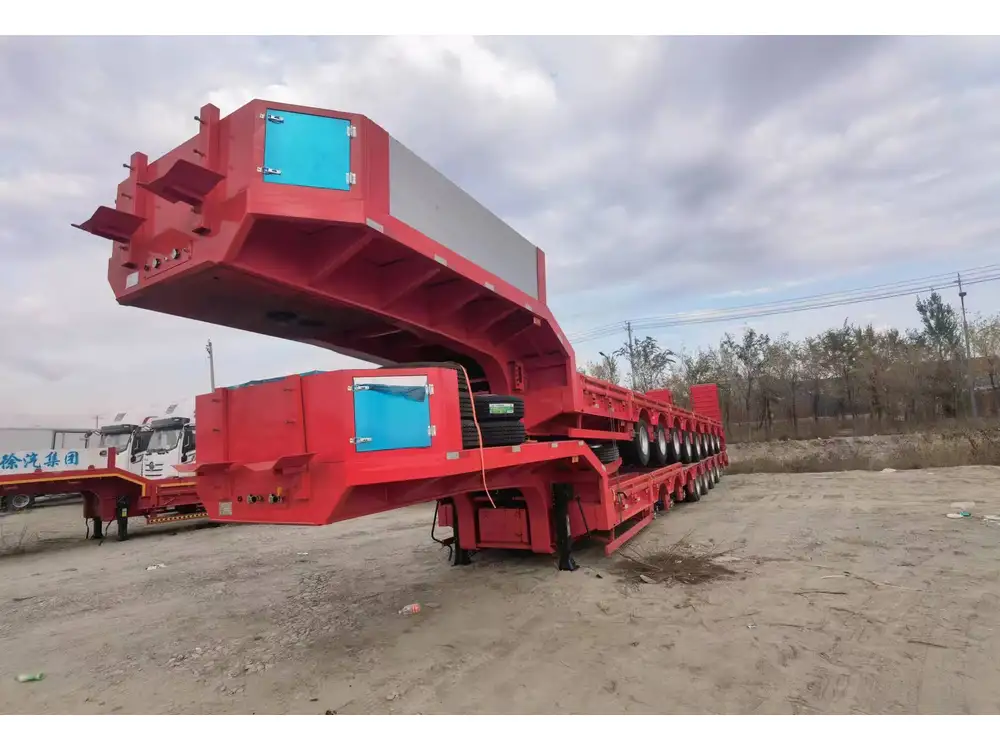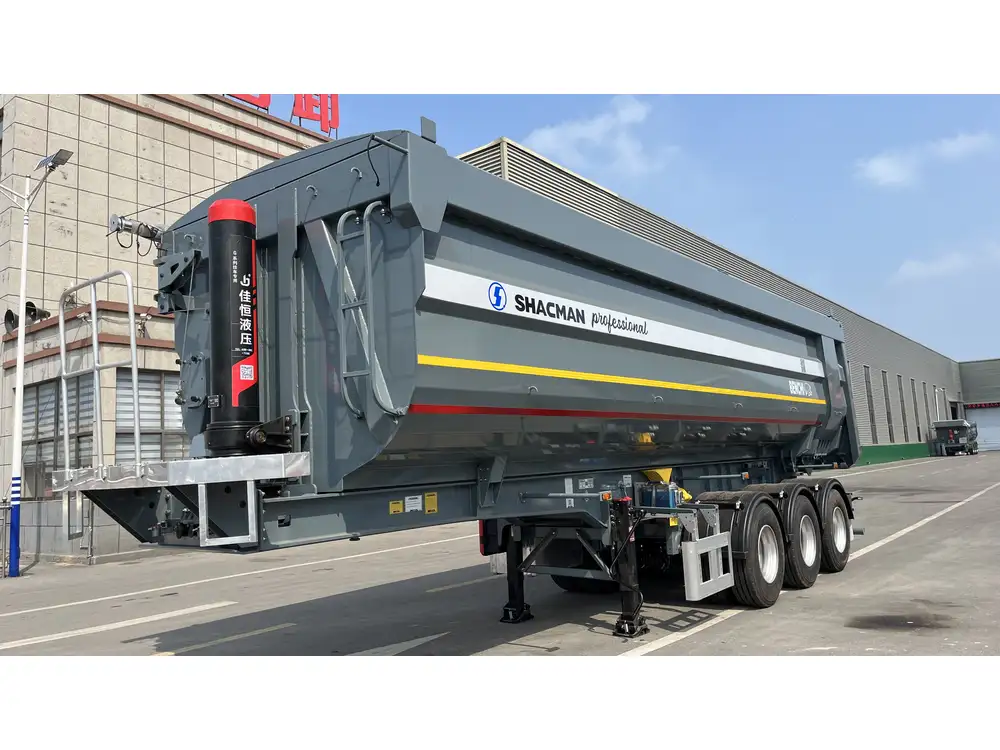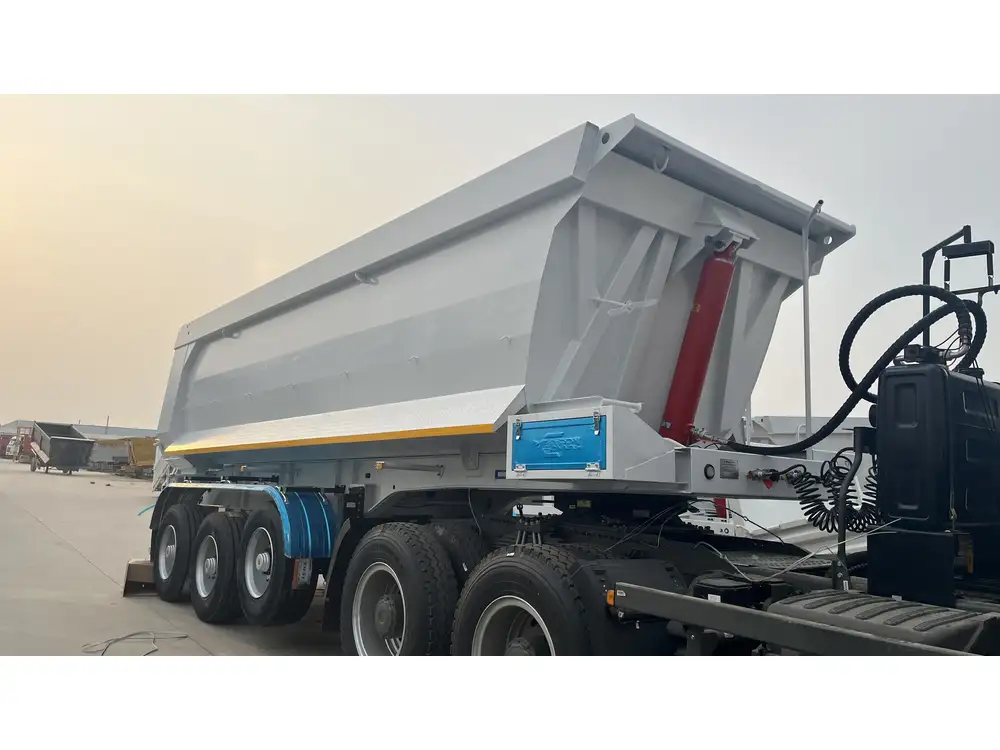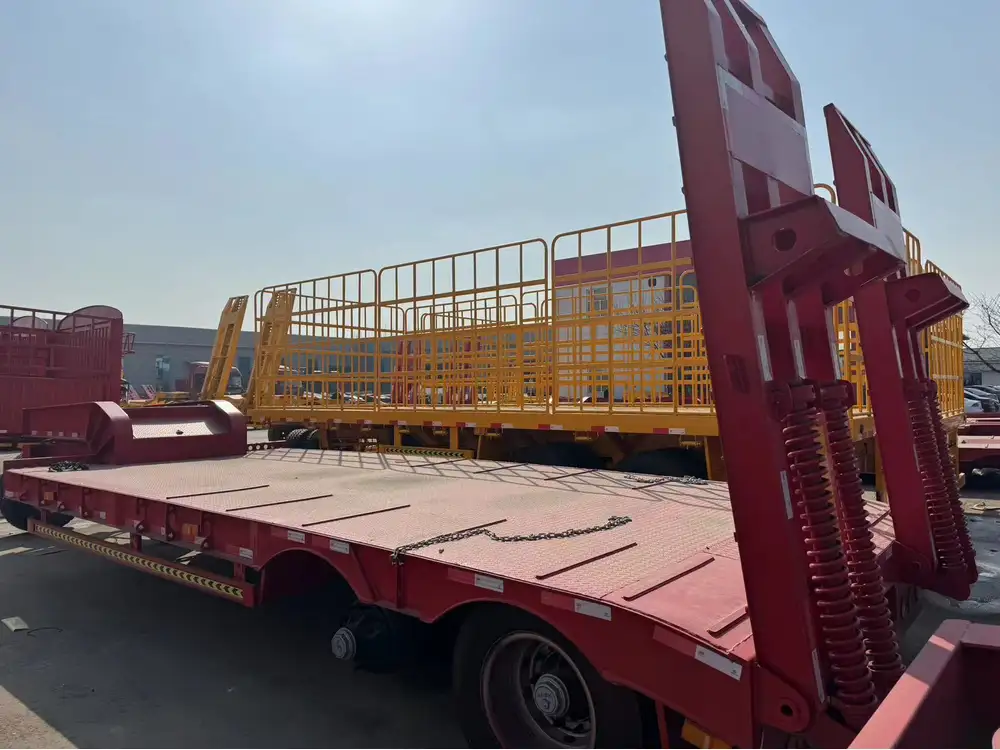When it comes to transportation logistics, the dimensions of a semi-trailer are crucial pieces of information that can significantly impact safety, compliance, and efficiency. An essential aspect of these dimensions is the height of a semi-trailer, which influences not only the vehicle’s ability to navigate under bridges but also its overall cargo capacity and suitability for various types of loads. In this guide, we’ll dissect the height specifications, regulatory considerations, and practical implications of semi-trailers.
What is a Semi-Trailer?
A semi-trailer is a trailer that does not have a front axle and is designed to be towed by a truck. It typically features a structure that allows it to bridge the gap between the truck’s cab and a trailer cargo area. This configuration results in a significant weight-saving and maneuverability advantage.
Standard Heights of Semi-Trailers

Typical Height Measurements
The standard height of a semi-trailer generally ranges between 13.5 to 14.5 feet (approximately 4.1 to 4.4 meters). However, several factors contribute to the actual height, including the design of the trailer, the type of cargo it is carrying, and regulatory guidelines.
| Height Specification | Measurement (feet) | Measurement (meters) |
|---|---|---|
| Minimum Height | 13.5 | 4.1 |
| Maximum Height | 14.5 | 4.4 |
Types of Semi-Trailers and Their Heights
| Type of Semi-Trailer | Average Height (feet) | Average Height (meters) |
|---|---|---|
| Flatbed Semi-Trailer | 13.5 | 4.1 |
| Reefer (Refrigerated) Trailer | 13.6 | 4.1 |
| Dry Van Trailer | 13.6 | 4.1 |
| Tanker Semi-Trailer | 13.5 | 4.1 |
| Lowboy Trailer | 12.0 | 3.7 |
Importance of Semi-Trailer Height

1. Compliance with Regulations
Regulatory agencies impose height restrictions for roads and bridges to ensure safe passage for all types of vehicles. Understanding trailer height is vital for compliance. The Federal Highway Administration (FHWA) mandates a maximum allowable height of 13.5 feet on interstate highways in the United States, though some states may allow higher limits—often up to 14.5 feet.
2. Operational Flexibility and Efficiency
The height impacts the operational flexibility of a semi-trailer:
- Navigating Urban Areas: In cities with low bridges, height awareness ensures that trucks avoid collisions, preventing potentially severe accidents.
- Loading Dock Compatibility: Semi-trailers must be compatible with various loading docks, which can have height restrictions. This alignment is essential for efficient loading and unloading processes.
3. Aerodynamics and Fuel Efficiency
The height of a semi-trailer also plays a pivotal role in aerodynamics. Taller trailers can potentially create more drag, negatively impacting fuel efficiency. Manufacturers are continually exploring designs that balance height with better aerodynamics, resulting in lower fuel consumption.

How to Measure the Height of a Semi-Trailer
Step-by-Step Measurement Process
- Park on Level Ground: Ensure that the semi-trailer is parked on even terrain for accurate measurement.
- Use a Measuring Tool: Utilize a tape measure or laser measuring device for precision.
- Measure from the Ground: Start at the ground level and extend the measuring tool to the highest point of the semi-trailer.
- Noting Variations: Keep in mind that trailer accessories, such as air conditioning units or load bars, can add extra height. It’s essential to measure these additions if they are present.
Factors Influencing Height
- Suspension Type: Air ride suspensions can adjust the height depending on the load, while fixed suspensions maintain a set height.
- Load Type: Different cargo types may necessitate changes in load distribution and thus affect the trailer height at different times.

Common Issues Related to Semi-Trailer Height
1. Bridging Accidents
One of the most severe consequences of improper height awareness is bridging accidents. These events can lead to significant vehicle and property damage, injuries, and even fatalities. It’s crucial for drivers to understand their trailer heights and to plan routes accordingly.
2. State-specific Restrictions
Some states enforce unique regulations related to vehicle heights that might differ from federal standards. Drivers must familiarize themselves with local laws to avoid fines and ensure safe travels.

3. Potential Overloading
When semi-trailers are overloaded or improperly loaded, this can lead to a variation in effective height, increasing the risk of collisions with overhead structures.
Best Practices for Managing Semi-Trailer Height
1. Regular Inspections
Conducting regular inspections can help to ensure compliance with height regulations. Checking for any equipment that might elevate trailer height, such as ladders and accessories, is key.

2. Route Planning
Employing route planning tools is critical to preemptively identify and navigate areas with strict height restrictions. It’s advisable for fleet managers to ensure that drivers have access to updated maps that indicate tunnel and bridge heights.
3. Communication and Training
Educating drivers about the impact of trailer height on safety and regulations enhances operational safety. Ongoing training sessions should emphasize height awareness and hazard recognition.
The Future of Semi-Trailers and Height Considerations

Evolving Technologies
Advancements in trailer design, such as the use of lighter materials and improved suspension systems, allow for flexible height adjustments and could result in more streamlined vehicles that maximize safety and fuel efficiency.
Regulations and Standardization
As the transportation industry continues to evolve, regulations may adapt to better suit the changing landscape of logistics. The emergence of electric and autonomous trucks could influence design decisions regarding trailer heights and configurations.
Commitment to Safety and Compliance
Manufacturers and transport companies must remain vigilant regarding changes in laws, emerging technologies, and industry best practices. Safety and reliability remain the guiding tenets of semi-trailer manufacturing, ensuring that both the product and the operation are optimized.

Conclusion
The height of a semi-trailer, while often overlooked, plays a vital role in the safety, efficiency, and regulatory compliance of the transport industry. Whether you’re a manufacturer, fleet manager, or driver, understanding the implications of semi-trailer height enhances your ability to operate securely and effectively. By ensuring that all stakeholders are informed and aware of best practices, we can contribute to a safer and more efficient logistics environment.
As we delve into the finer details, we recognize the symbiotic relationship between trailer design, regulation adherence, and operational efficiency. Stay informed, prioritize safety, and adapt to the evolving landscape to navigate the highways and byways with confidence.



